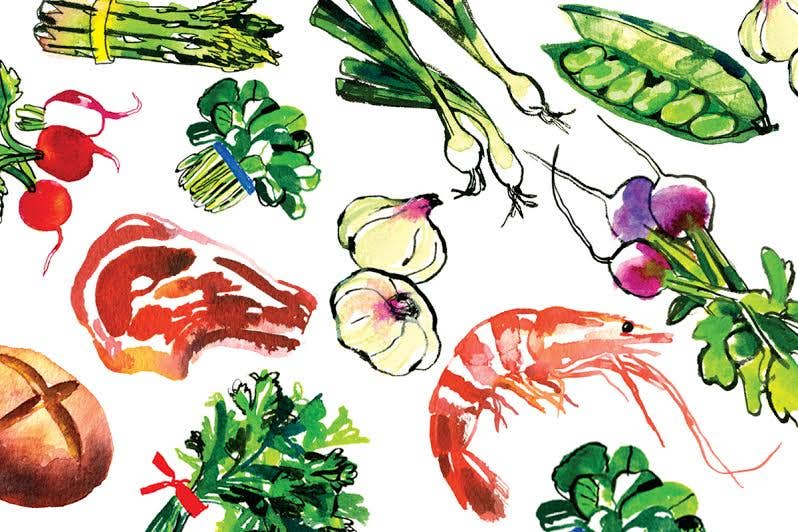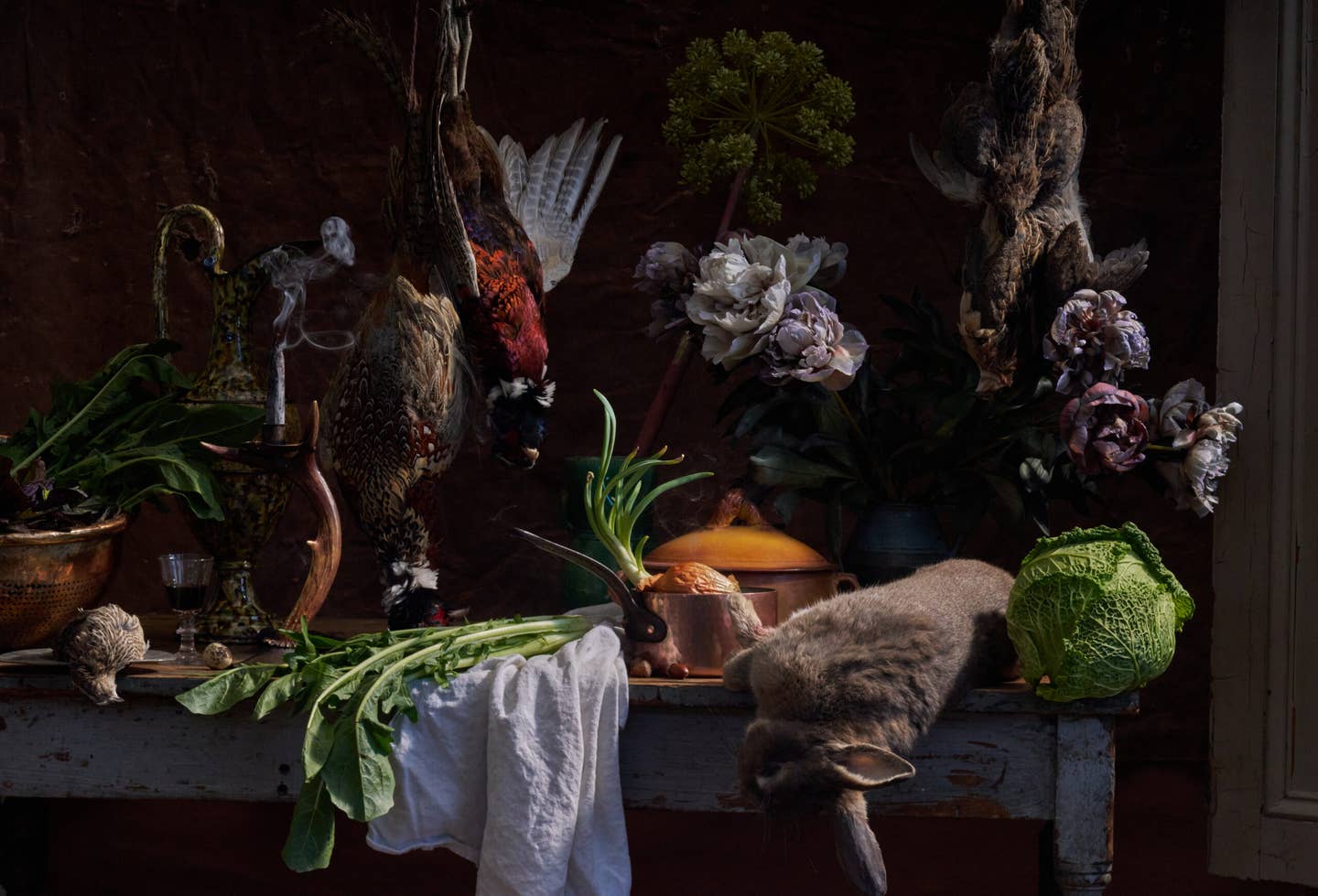
I head southeast on Interstate 16, outside of Macon in central Georgia, driving through nearly uninterrupted countryside under a brilliant winter sun. The leaves of the oak and pecan trees have thinned out, and the occasional red-clay road running off at an angle from the highway is clearly visible. When I reach Route 1, I take it down toward Toombs County. From there, I pick up Route 29 and drive at a meander, once braking to a stop so that an ancient blue-tick hound dog snoozing on the warm macadam can stiff-leggedly get up and move out of the way. There are fields on both sides of the road, and as I drive along, an intoxicating, sweet peppery fragrance begins to perfume the air. That scent tells me that I've entered vidalia country.
I've come to these fields in this corner of deeply rural, God-fearing southeastern Georgia because I am a lover of onions. But not just any onions. Oh, I'm fond enough of the green onion, the white and the yellow; I like the texas 1015, the walla walla, the sweet imperial, and the maui, all sweet to some degree. I appreciate these onions, and I eat them often—but they don't have my heart. The one that does is the F-1 hybrid granex, better known as the vidalia (pronounced vy-DALE-yuh). And that's why I'm here.
The vidalia onion is a singular member of the genus Allium cepa—ephemerally delicate, wonderfully juicy, buttery-mild but also somehow assertive. And very sweet. As sweet as fruit, in fact, with a sugar content of 12.5 percent (the average onion is closer to 7 percent, and even that modest amount is masked by a high sulfuric-acid content, which the vidalia doesn't share). The vidalia is so sweet, in fact, that the famous hyperbole about eating onions raw and mistaking them for apples isn't really an exaggeration at all. I've done it myself—but only once: The vidalia wasn't unenjoyable eaten that way, but it was still an onion. (I do eat vidalias raw—chopped and tossed with fresh tomatoes, mixed with tangy goat cheese, or in thick slices on a burger. In the South, however, they're more likely to be stuffed with meat and cooked in the oven or baked into tarts or quiches.)
The vidalia story begins in 1931, when a local farmer named Mose Coleman discovered that the onions he was growing were sweet, not hot. His neighbors, who were having trouble selling their own produce during the Depression, noticed that Coleman was moving his sweet onions at good prices, so they planted them, too. In the 1940s, the state built a farmers' market in Vidalia, at the junction of several of South Georgia's main highways. Travelers carried the onions to other parts of the state and beyond, the Piggly Wiggly grocery chain started carrying them, and, in 1977, a local arts-and-crafts fair was transformed into the Vidalia Onion Festival (held every April since then). Though vidalias can cost more than twice the price of their more acrid kin, they have now become famous around the world, showing up by name in onion soup, onion relish, fried onion rings, and more.
"Vidalias are sweet," explains Delbert Bland, of Bland Farms, one of the largest growers of vidalias, "because the [area's] soil and the groundwater is very low in sulfur, which is what makes onions hot. You can take a vidalia seedling and plant it someplace else and it grows a hot onion." In the farming community of Valdosta, just 80 miles southwest of Vidalia, for instance, only the sulfur-hot supermarket variety grow.
The affable Bland speaks with authority: He and his father, Raymond, cultivate 2,200 of the 12,800 acres on which vidalias may officially be grown. Giving the onion a kind of appellation controlee, the federal government limits vidalialand to just 13 counties and parts of seven others in coastal Georgia. The appellation was based on a Georgia law, says Bland, that was enacted to guard the integrity of the vidalia name. Quick-buck packers from outside the state, however, started stuffing bags with any old onions—no matter how hot or bitter they might have been—and labeling the contents "genuine vidalia". Georgia asked for a federal statute to protect their multilayered pride and joy, and got it.
There was a time when you had to mill around your local produce market waiting for the shipment from Georgia if you wanted to be sure to get your fair share of vidalias. In early April every year, 25-pound bags of them would start appearing; by early June, they'd be gone for another year. They were fragile, too, losing their flavor and crispness with depressing rapidity. One year, I tried the Georgian method of storing them: I dropped the onions one by one down the legs of a pair of pantyhose, tying knots to separate each bulb, then hung the resultant agricultural sculpture in a cool, dim, dry place, snipping off onions as needed. This helped prolong their life, and my 25 pounds carried me through four very happy months.
We still have to wait until April for the first crop of vidalias to arrive, but since 1990, a low-oxygen, controlled-atmosphere storage system has extended the season from then until at least the start of winter. "Can't hardly tell the difference," says Bland, comparing a just-picked vidalia with a stored one. Besides giving consumers longer access to vidalias, the system has also brought higher profits to growers: Because they're no longer forced to sell for buyers' prices during a harvest glut, they can exercise more control over the market—and some farmers have been able to expand their onion acreage and increase production as a result.
Improved storage and supply doesn't mean that there are limitless quantities of vidalias, of course. Even Bland Farms has had to refuse new orders on occasion, since their annual production is often reserved by onion lovers who have placed prepaid orders months in advance. And though nothing would give Delbert Bland greater joy than to see a vidalia onion on every plate at every meal—year-round—the limited supply doesn't bother him. "That's just the way of it," he says philosophically. "Good things are worth working for and waiting on. Wouldn't be special if they weren't." _
_
Keep Reading
Continue to Next Story










